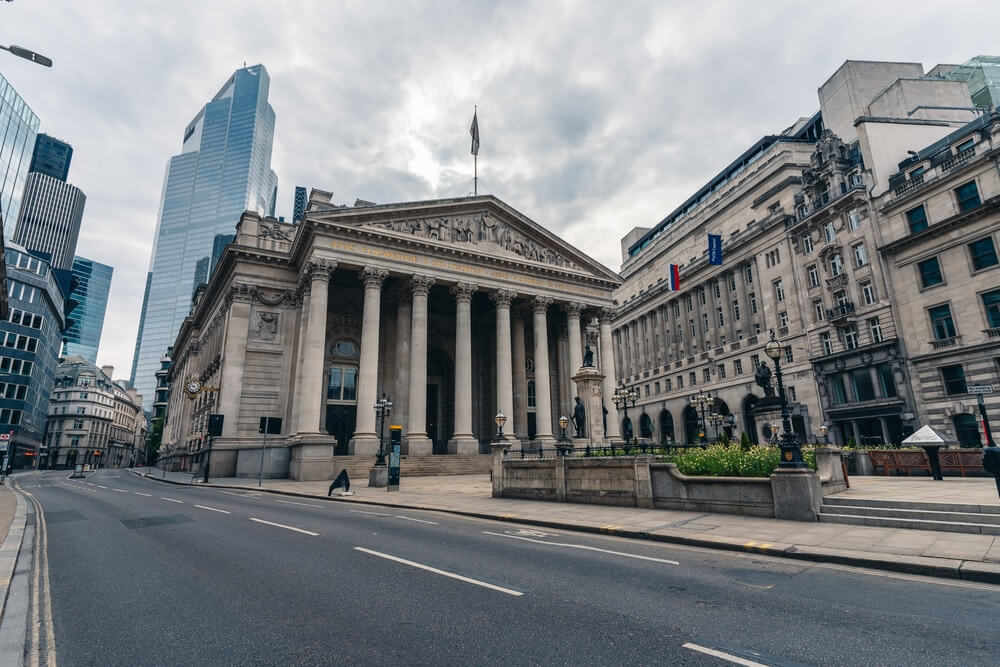
Bank of England (BoE)
The Bank of England is an institution of major economic and historical significance. Besides acting as the United Kingdom’s central bank, it was also a pioneer in banking. Namely, most modern central banks follow a model that the BoE initially established. Additionally, it’s currently the world’s eighth oldest bank, with its roots going over three centuries back, to 1694. However, the Bank spent most of its lifetime as a private entity, only getting nationalized in 1946.
The Bank of England has more of its history written in records than most similar institutions. As such, we won’t even attempt to go over everything, as it’s way beyond the scope of a text like this. However, before we start talking about the Bank’s current state, we feel like discussing what got it there is in order.
The Bank’s conception was a part of England’s effort to climb back to its global force status following a defeat at French hands. The Battle of Beachy Head made it clear the English naval force was weaker and needed to step up. However, that required a sizeable loan, which the government couldn’t take out; the solution to the issue was founding the BoE.
In the 18th century, the Bank mostly had a calm period, with the exception of moving a few times and the start of a national debt. In the 19th, there was a narrowly-avoided liquidity crisis that led to the employment of the gold standard. The 20th was much more eventful and meaningful, starting with the Bank leaving the gold standard. Later, the Bank gained more independence with the exclusive responsibility to manipulate interest rates.
Bank of England’s Functions
As a central bank, BoE’s total role is quite broad, but it can still be watered down for the sake of explanation. As such, we’ll group the Bank’s functions under two categories, the first of which is ensuring fiscal stability. That means the Bank must manipulate currency prices so that they line up with the government’s inflation goal. To do that, the Bank modifies its base interest rate, thus increasing or lowering the price of the currency.
As a part of the effort in ensuring the UK’s monetary well-being, the Bank also manipulates foreign exchange prices and gold reserves. To achieve its goal, the Bank cooperates with the HM Treasury and other financial systems and central banks. That means its effect isn’t only internal but external as well, and perhaps equally as important.
Another vital aspect of fiscal stability is regulation. Namely, the Bank uses various surveillance and market intelligence to dispose of potential threats. The one that executes the elimination of potential dangers isn’t the Bank itself, but it still plays an important role. Additionally, it used to supervise all banking and insurance, but that function has since been moved to another organization, called the Financial Services Authority.
Lastly, the Bank has exclusive issuing rights for currency in England and Wales, while Scottish and Northern Irish banks print their own money. However, even the latter two must back their funds with one-to-one deposits with the BoE.
The Bank’s second major function is as an asset purchase facility. Namely, it buys high-quality assets to improve the liquidity of credit markets. It also enables mechanisms that allow the Bank’s quantitative easing strategy. However, the function is mostly under the control of a subsidiary, the Bank of England Asset Purchase Facility Fund Limited (BEAPFF).
BoE Leadership
At the top of Bank of England’s pyramid is the Governor of the Bank of England. It’s defined as a civil service post, but the candidate selection remains exclusive to the Bank itself. The current Governor is often the one to groom their successor, and the role comes with an additional position. Namely, the Governor automatically becomes the Chairman of the Monetary Policy Committee.
However, the person in the position isn’t the sole decision-maker, as there’s also the Court of Directors. The Court is a unitary board that controls multiple vital aspects of the Bank, such as organizational strategy and budget. It consists of five executive members that belong to the Bank and a maximum of nine non-executive members. The crown appoints the second group, and the Court meets up at least seven times annually.




